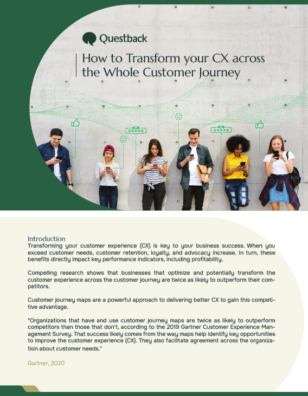Five Things You Should Know About Continuous Listening

The employee feedback landscape continues to gather pace with employers (and employees) increasingly recognising the benefits of ‘continuous listening’, alongside more traditional ‘annual’ or less frequent surveys. By ‘taking the pulse’ of employees, continuous listening helps organizations to quickly spot ‘ups and downs’ in the mood of their workforce and to take effective action where needed.
What are the challenges of this approach and how can companies overcome them? To help answer this, we’ve put together a list of the top 5 ‘FAQs’ when it comes to kicking off a continuous listening strategy feedback program.
1. Where’s this survey come from?
“I just got an email. From HR, I think, but maybe from my manager?”
“What happens when I click on the smiley face? Is this spam?”
“Is this anonymous? Will I be listened to?”
“Is this just a weekly annual survey?”
Answers
- Communicate throughout, including a commitment from the top of the organisation to listen and act wherever possible on the feedback received.
- Alert employees and managers about the forthcoming feedback surveys.
- Remind employees this isn’t for complaints or campaigns, it’s for constructive feedback, ideas and suggestions.
2. Who gets to see the results?
“Yikes, my team is seeing my results at the same time as I am.”
“Who said, that, I wonder? Isn’t it anonymous?”
“Ooh, a dashboard in the canteen. Really?”
“How can we possibly tell them, what they told us?”
Answers
- Communicate throughout, including who will see what, and when.
- You might be able to work out who said what, but that’s not the point.
- It is a brave step for managers and for the organisation.
3. How we will manage the volume of feedback?
“We launched this and had 500 comments in Week 1!”
“It’s hard to spot the common issues and concerns.”
“People seem nervous of making honest comments.”
“Seems like people have ganged up to make a point.”
Answers
- Communicate throughout being sure to manage expectations and timelines.
- Ask open questions in a constructive way, and you won’t end up with #whinge-gate. The way to generate honest feedback is to inspire an open-culture without fear of blame or retribution.
- Make a plan for managing the feedback and prioritising the themes and suggestions (remembering ‘quality’ over ‘quantity’).
4. How can we encourage honest and appropriate feedback?
“There’s some really inappropriate language in these comments.”
“How do we balance openness with any form of screening?”
“It’s time we stop this.”
“It’s only one or two comments in amongst 100s of others.”
Answers
- Communicate with transparency throughout. It’s ok to ‘clean’ comments to remove profanity or to protect confidentiality of individuals but resist the temptation to go too far at the expense of action.
- Focus more on the themes and suggestions for actions and improvements.
- Reinforce the benefits of two-way dialogue.
5. We’re off to a great start but how can we sustain participation levels?
“Nothing seems to be being done with my feedback.”
“I wonder what happened to my suggestions for improvement?”
“Was I the only one to take some action?”
Answers
- Communicate openly throughout. Share feedback in team meetings, collaborate and take action/share examples of actions being taken in the organisation.
- Measure or observe improvements, share best practice.
The winning formula
If you think a more frequent feedback programme of continuous listening is right for you, we believe there’s a number of key building blocks that organizations should put in place to make it a success. First and foremost, just get going. Don’t hesitate, it’s possible to get started next week if that’s what you want. Just make sure you have a plan in place and a timeframe to work to, tell people what you are doing, and commit to these timeframes.
Second, don’t be afraid to over-communicate. Tell your organization what you’re doing and when you’re doing it. Keep people informed of what’s happening with their results and update them on progress with action planning (even if achievements are still pending). There is little more demotivating for employees than feeling their feedback has disappeared into a black hole.
Finally, be ready to share. We always advise our customers to resist the urge to sanitise employee feedback. Keep an eye on the comments, particularly the themes around what people are saying, and remember that the detail often reveals valuable comments and ideas. And importantly, the success of your programme and investment depend on it, act. Keep employees informed about progress on these actions (and timelines for the delivery of these).
Keen to explore the topic more? Listen to our webinar on continuous listening and get going today.

Customer Journey – Transform your CX
Do you want to create a superb customer journey? Gain a competitive advantage, enjoy greater profitability and deliver a superior customer experience? Download our new whitepaper now!










